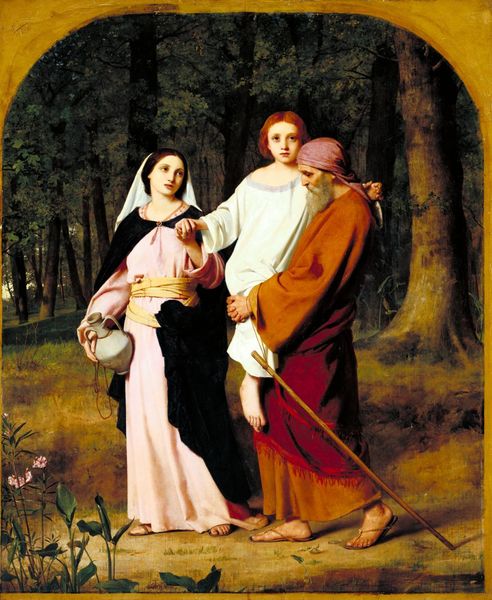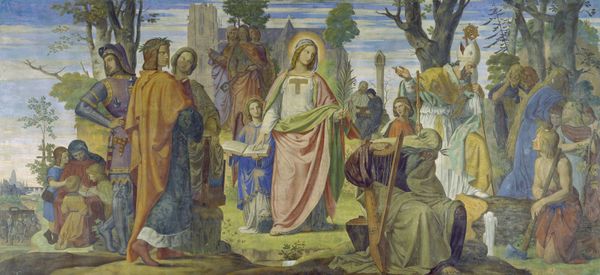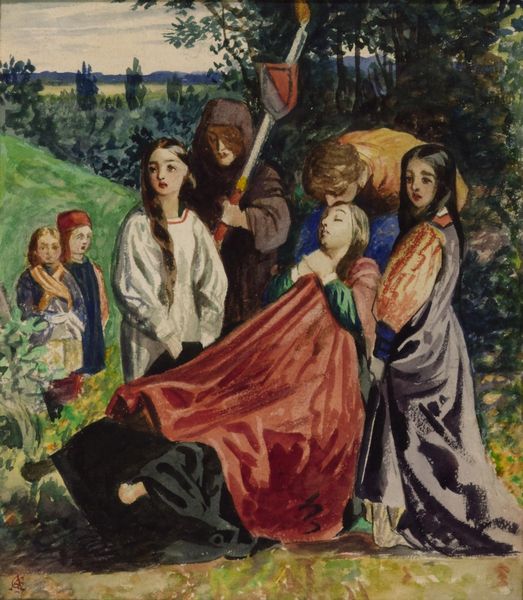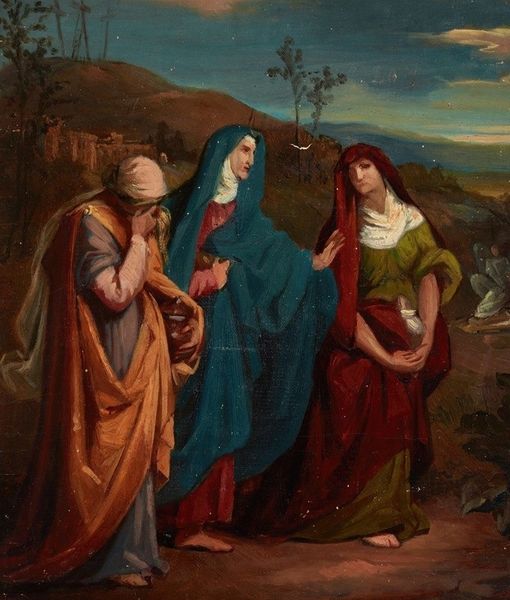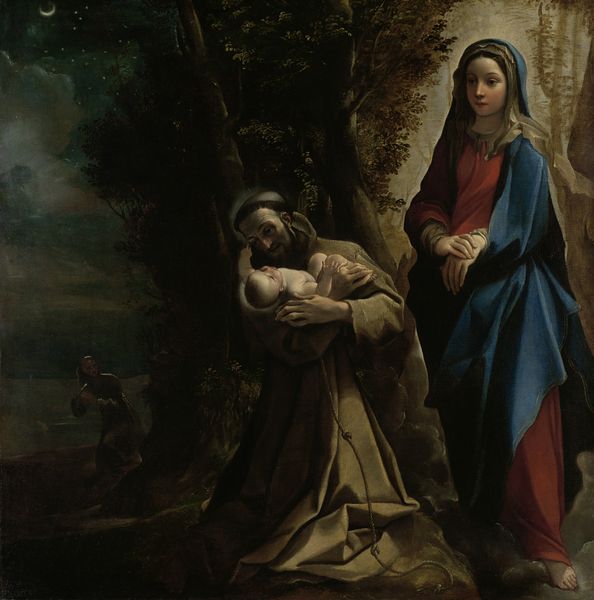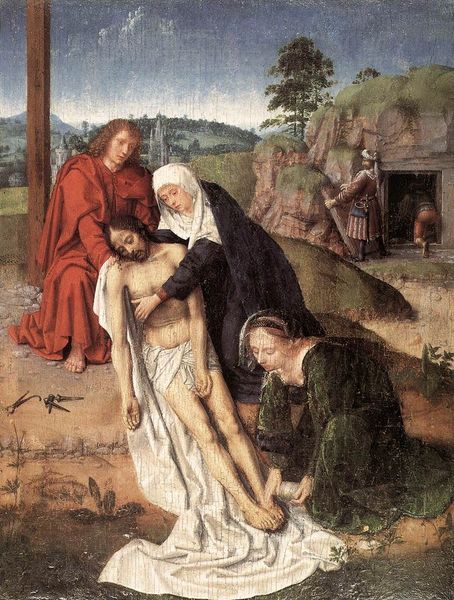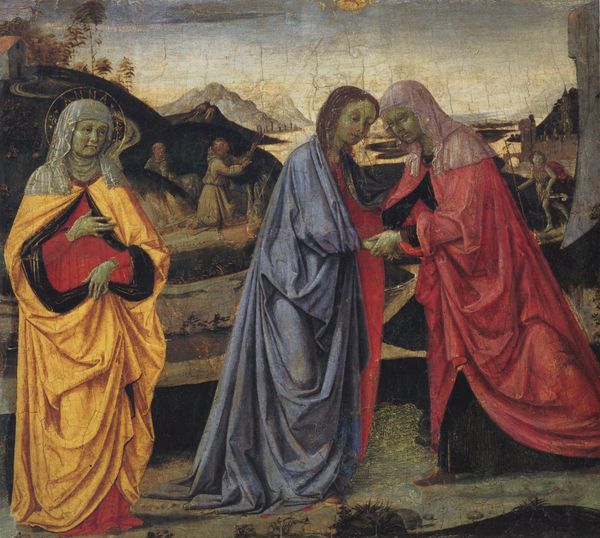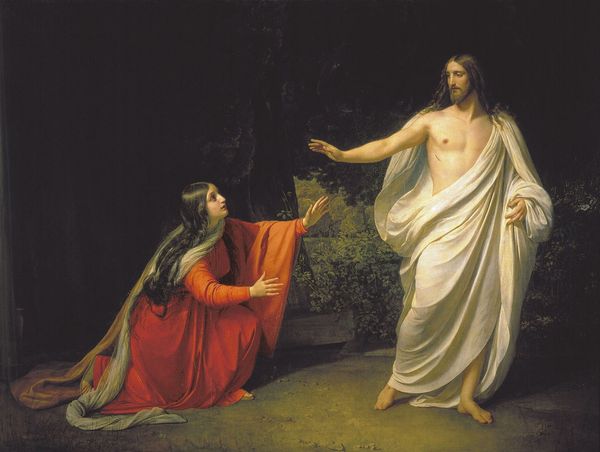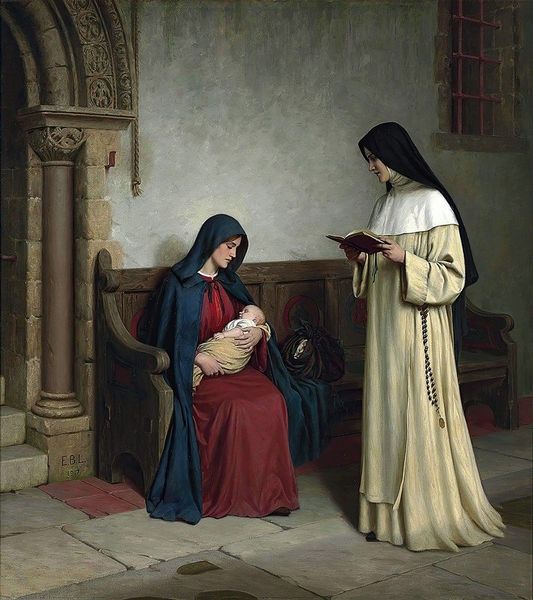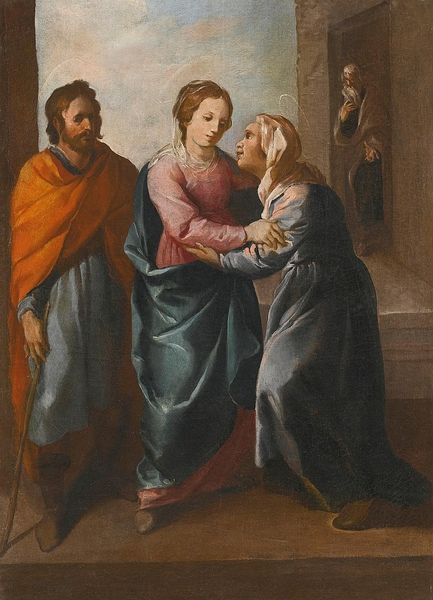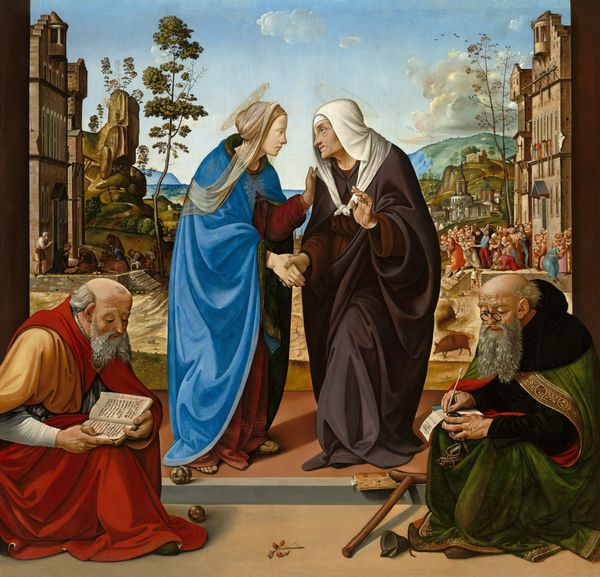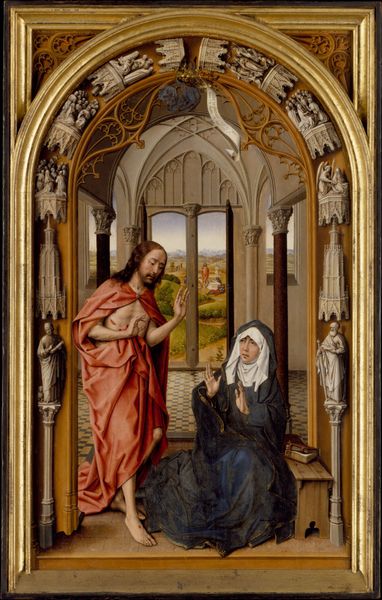
Dimensions: support: 762 x 1099 mm frame: 1074 x 1402 x 135 mm
Copyright: CC-BY-NC-ND 4.0 DEED, Photo: Tate
Curator: William Dyce painted "St John Leading Home his Adopted Mother," which now resides at the Tate. It depicts a somber scene of two figures walking hand-in-hand. Editor: Yes, the starkness of the landscape and the figures' dark robes definitely contribute to a feeling of mourning and resignation. The medium seems to contribute to this feeling of solemnity, doesn't it? Curator: I agree. Dyce’s treatment of Mary as an adopted figure is fascinating. It speaks volumes about the changing social structures and the role of women during the Victorian era, and perhaps comments on familial duty. Editor: Notice also the tangible connection conveyed through the depiction of their clasped hands. The contrast of the chain connecting them, against that hand clasp, is visually striking. Curator: Exactly. The hand clasp transcends the pain felt by Mary to create a deep connection to the viewer. Editor: A starkly beautiful reminder of the power dynamics inherent in familial obligations, and the weight they carried. Curator: Indeed, a very striking piece reflecting the era's social complexities. Editor: Agreed, it gives me more to think about when I consider the meaning of the painting.
Comments
tate 7 months ago
⋮
http://www.tate.org.uk/art/artworks/dyce-st-john-leading-home-his-adopted-mother-n01426
Join the conversation
Join millions of artists and users on Artera today and experience the ultimate creative platform.
tate 7 months ago
⋮
In this episode from the New Testament the Virgin Mary and St John depart from Jesus’s tomb in the cool, symbolic light of the setting sun. Inspired by Renaissance painting techniques, Dyce has deployed rich colours, clearly-defined outlines and precise brushstrokes, which lend a pristine finish. Dyce paid close attention to the natural environment of the Holy Land, the same kind of ‘truth to nature’ favoured by the Pre-Raphaelite Brotherhood. Dyce never travelled beyond Europe but achieved this authenticity by studying botanical illustrations or observing plant specimens in a hothouse. Gallery label, October 2013

